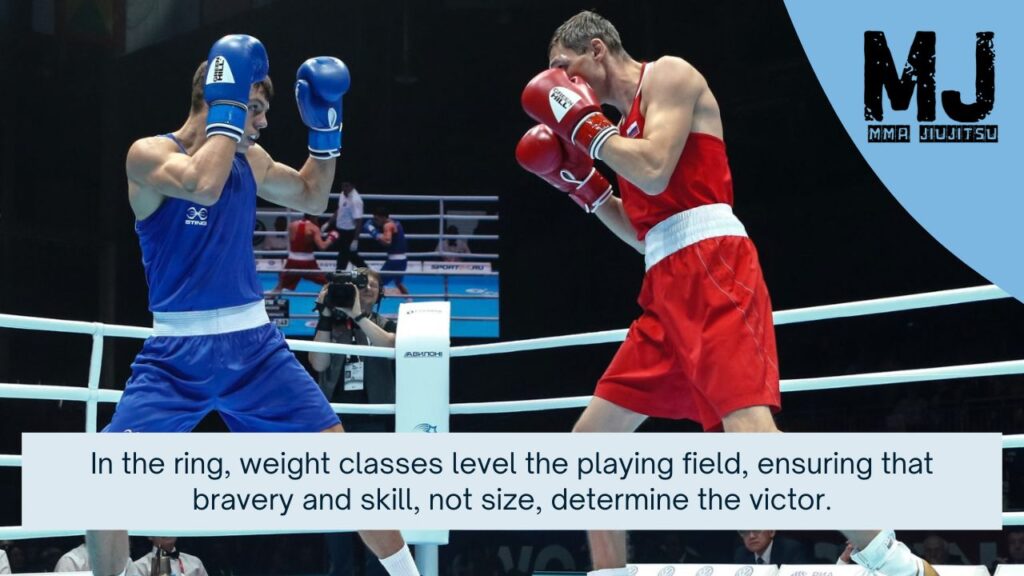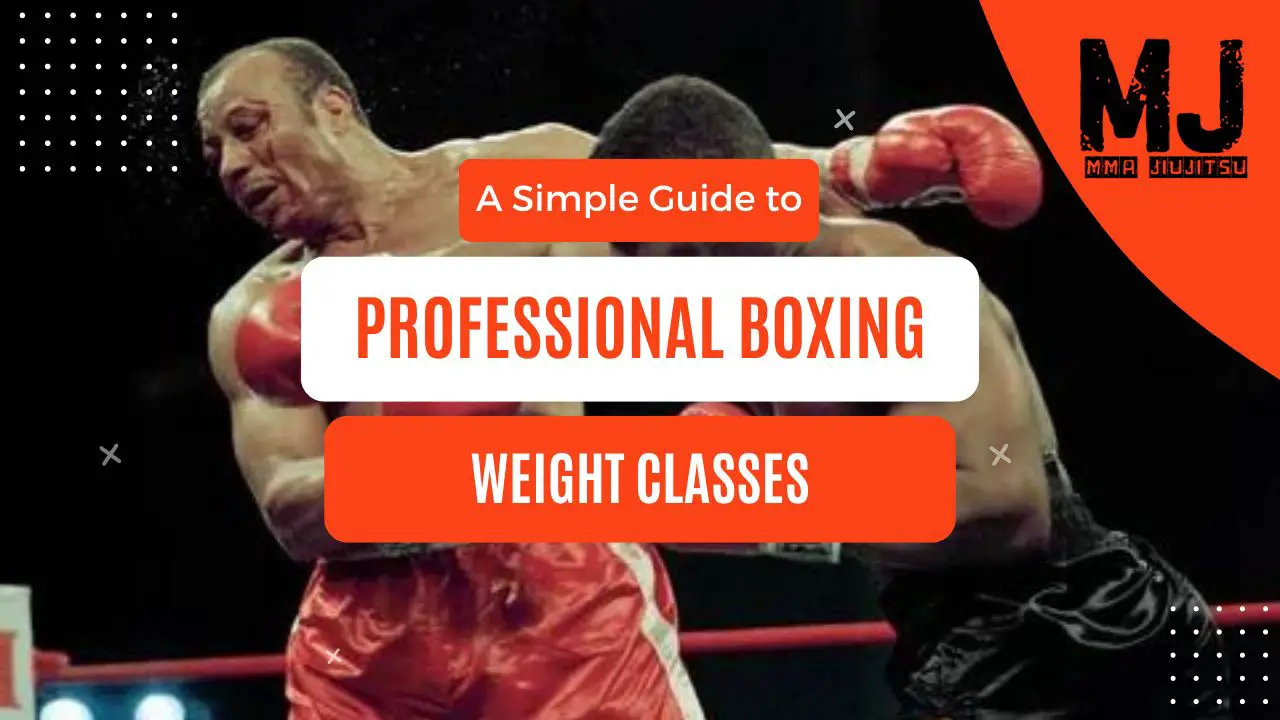Professional boxing is known for being intense and exciting. To keep things fair and competitive, fighters are put into different weight classes.
This grouping lets athletes compete against others of the same weight, which makes games safer and more strategic. In professional boxing, there are different weight classes. This guide will go over those. Watch out!
Different Professional Boxing Weight Classes

Millions of people follow professional boxing, which is one of the most exciting forms of martial arts.
Professional boxing is run by the World Boxing Association, the World Boxing Council, the International Boxing Federation, and the World Boxing Organization.
In professional boxing, weight classes help athletes compete fairly well and keep them from getting hurt when their weights are different.
Various Professional Boxing Weight Classes
Based on the chart below, most professional boxing governing bodies list 17 weight classes for men.
| Boxing Weight Class | Weight Limit in Kilograms | Weight Limit in Pounds |
| Minimumweight | 48 kg | 105 lbs |
| Light flyweight | 49 kg | 108 lbs |
| Flyweight, | 51 kg | 112 lbs |
| Super flyweight | 52 kg | 115 lbs |
| Bantamweight | 53.5 kg | 118 lbs |
| Super bantamweight | 55 kg | 122 lbs |
| Featherweight | 57 kg | 126 lbs |
| Super featherweight | 59 kg | 130 lbs |
| Lightweight | 61 kg | 135 lbs |
| Super lightweight | 63.5 kg | 140 lbs |
| Welterweight | 67 kg | 147 lbs |
| Super welterweight | 70 kg | 154 lbs |
| Middleweight | 72.5 kg | 160 lbs |
| Super middleweight | 76 kg | 168 lbs |
| Light heavyweight | 79 kg | 175 lbs |
| Cruiserweight | 91 kg | 200 lbs |
| Heavyweight | + 91 kg | + 200 lbs |
Is There Professional Boxing for Women?

Professional boxing has become more popular since women have been able to compete in it for a long time. Boxers like Laila Ali, Christy Martin, and Ann Wolfe are some of the best known women in the world.
These amazing professional women boxers have the following stats:
- Laila Ali, who is Muhammad Ali’s daughter, is one of the best female fighters ever. In her 24 professional fights, she has won all of them, 21, by knockout. In 2007, she retired having never lost a fight. She held the IWBF light heavyweight title, the WIBA, IWBF, WBC, IBA, and WBC female super middleweight titles.
- Christy Martin is one of the best female boxers in the history of the sport. Between 1989 and 2012, she was a professional boxer and won 49 of her 56 fights, including 31 by knockout. Martin won the WBC super welterweight title for women in 2009.
- Ann Wolfe is regarded as one of the finest female boxers in history. She was a professional boxer from 1998 to 2006 and won 24 of 26 fights, including 16 by knockout. Wolfe was also a world champion in three different weight classes: super-welterweight, super-middleweight, and light-heavyweight.
These women had successful boxing careers that paved the way for other women to follow suit. Nevertheless, professional boxing has shown to be just as hard for women.
Since 1990, many sports groups have been pushing for women to become fighters. However, most female boxers need to improve their skills and level of talent to meet the standards of professionals.
Can Boxers Move Between Weight Classes?

Boxers often move up or down in weight classes to find better competition or to compete for new titles.
To gain or lose weight safely during this transition, you need to do a lot of hard physical training and make changes to your diet.
The change in strategy can lead to more lucrative fights and more attention, but it also comes with risks because it can be hard to adjust to the speed and strengths of different opponents.
Impact of Weight Classes on Fights and Strategy

Boxing strategies and performance are greatly affected by weight classes. In the heavier classes, punches are stronger but move more slowly, while in the lighter classes, speed and agility are emphasized.
Because of this strategic change, boxers have to change how they train and fight based on their weight class, which changes how they approach each match.
Conclusion
A very important part of professional boxing is the weight classes.
They make sure that fights are fair and competitive by putting boxers up against opponents who are physically similar to them. This lets the boxers do their best.
Fans and people who want to become boxers can enjoy the sport more if they understand these divisions. They can help them understand how complicated and strategic boxing is.



